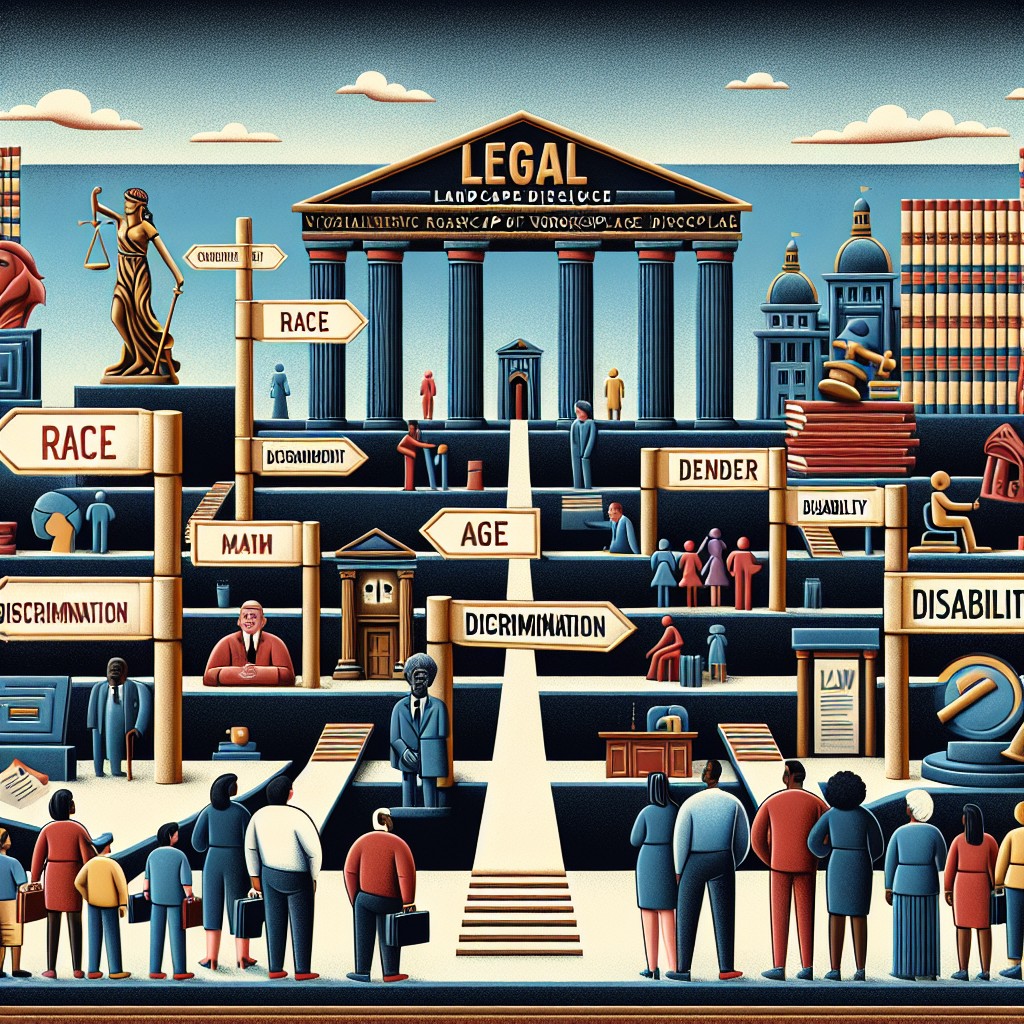Workplace discrimination is a serious issue that can have a profound impact on an individual's well-being and career prospects. Fortunately, there are laws in place to protect employees from discrimination based on various protected characteristics such as race, gender, age, disability, religion, and national origin. Understanding the legal landscape of workplace discrimination is crucial to recognize and protect your rights as an employee.
One of the primary federal laws that addresses workplace discrimination is Title VII of the Civil Rights Act of 1964. This act prohibits employers from discriminating against employees or job applicants based on their race, color, religion, sex, or national origin. Title VII applies to employers with 15 or more employees and covers various aspects of employment, including hiring, promotions, pay, training, and termination.
In addition to Title VII, there are other federal laws that protect employees from discrimination in the workplace. The Age Discrimination in Employment Act (ADEA) prohibits age discrimination against individuals who are 40 years of age or older. The Americans with Disabilities Act (ADA) prohibits discrimination against individuals with disabilities and requires employers to provide reasonable accommodations to employees with disabilities. The Equal Pay Act (EPA) ensures that men and women receive equal pay for equal work.
Apart from federal laws, many states have their own laws that provide additional protections against workplace discrimination. These state laws may cover a broader range of protected characteristics or apply to smaller employers. It is important to be familiar with both federal and state laws to fully understand your rights and protections.
If you believe that you have been a victim of workplace discrimination, it is crucial to take appropriate action to protect your rights. The first step is to document any incidents or evidence of discrimination, including dates, times, locations, and individuals involved. It is also recommended to report the discrimination to your employer's human resources department or a designated person within the organization.
If internal attempts to resolve the issue are unsuccessful, you may consider filing a complaint with the appropriate government agency. The Equal Employment Opportunity Commission (EEOC) is the federal agency responsible for enforcing federal laws against workplace discrimination. Most states also have their own agencies that handle discrimination complaints. It is important to file a complaint within the specified time limits, which can vary depending on the jurisdiction.
After filing a complaint, the agency will investigate the allegations of discrimination. If they find evidence of discrimination, they may attempt to resolve the issue through mediation or conciliation between the parties involved. If a resolution cannot be reached, the agency may file a lawsuit on behalf of the victim or issue a right-to-sue letter, allowing the victim to pursue legal action independently.
It is important to note that retaliation against individuals who report workplace discrimination is strictly prohibited by law. If you experience any form of retaliation, it is essential to document the incidents and report them immediately to the appropriate agency.
In conclusion, understanding the legal landscape of workplace discrimination is essential for employees to recognize and protect their rights. Federal laws such as Title VII, ADEA, ADA, and EPA provide significant protections against discrimination based on various protected characteristics. Additionally, many states have their own laws that offer additional protections. If you believe you have been a victim of workplace discrimination, it is crucial to document incidents, report them internally, and file a complaint with the appropriate government agency if necessary. By knowing your rights and taking appropriate action, you can help combat workplace discrimination and create a more inclusive work environment.

Published on April 5, 2023
The Legal Landscape of Workplace Discrimination: Know Your Rights
Share This Article
More Articles You Might Like
Discover More Content
Explore our collection of articles across various topics and categories. From cutting-edge technology insights to wellness wisdom, we curate the best stories to expand your horizons.
Article ID: 238